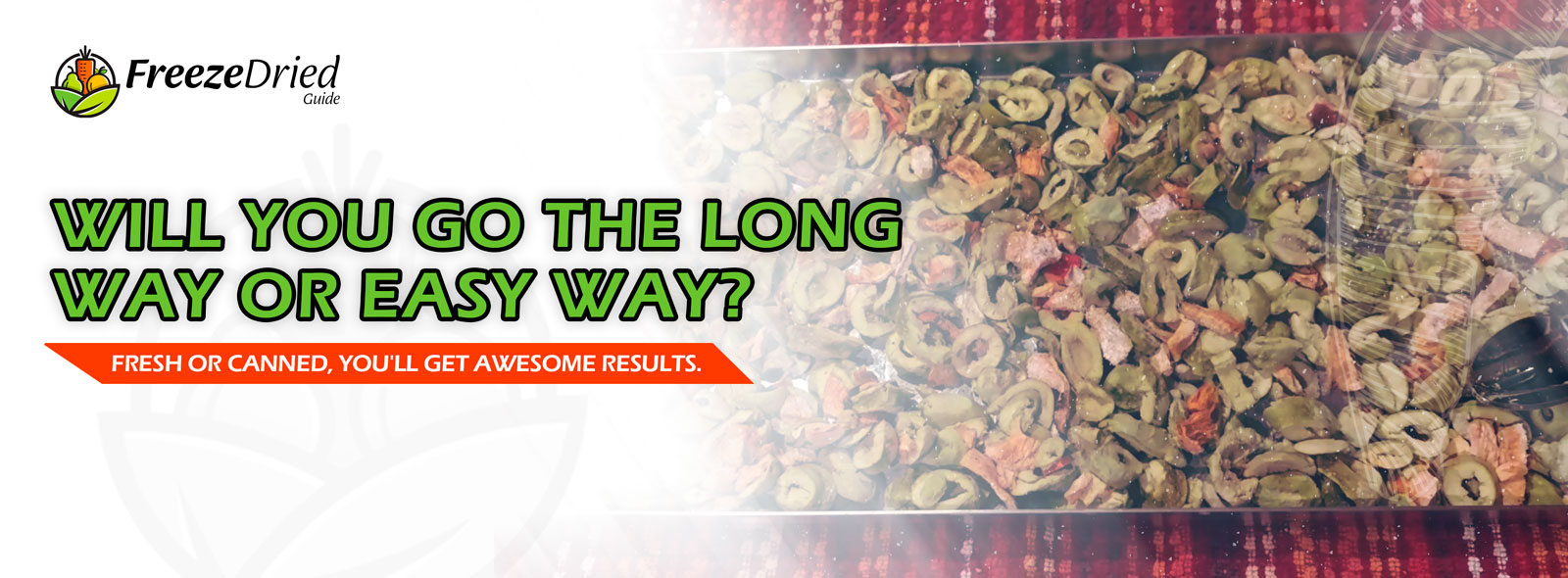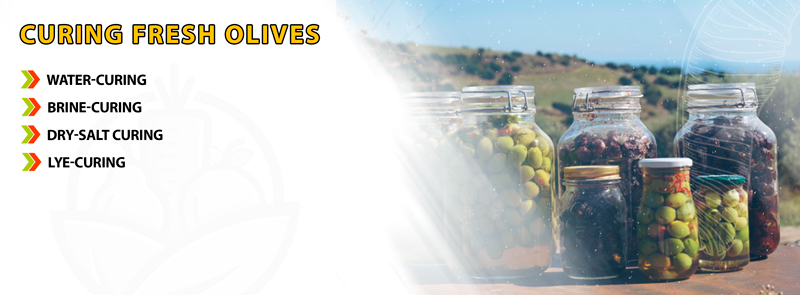Better Websites to own 2025
Jun 11, 2025

Have a load of olives, and you don’t know what to do with them? Here’s how to freeze dry olives to store them long-term until you’re ready to use them.
There are many varieties of olives to choose from.
Olives also come in green, purple, or black colors. Green olives are raw fruit with a firm texture and a hint of nutty, grassy flavor. Purple ones are fruits allowed to ripen on the tree. They’re meatier and have a sweeter, fruitier taste, making them the perfect toppings for pizza. Black olives are either allowed to ripen naturally on the tree or forced after picking using oxygen. These are softer, have a milder flavor, and mainly used as toppings.
Yes, you can. However, fresh olives are bitter because of the compound called oleuropein. Although the compound has unexpected benefits, its bitterness can increase tenfold when freeze-drying olives. So, what’s the way to remove the bitterness? That’s through a simple yet month-long process of curing and bringing. Before you cure your fruits, make sure that you fully wash them to take out surface dirt and bacteria.
There are several ways to cure the fruit:
Yes, it’s possible to freeze-dry canned olives. They’re more convenient because you don’t have to go through the long curing and bringing process. All you have to do is open the bottle or can, and they’re ready for freeze-drying.

Fortunately for us, yes, you can freeze-dry stuffed olives. However, not all stuffed ones can be freeze-dried. For example, you can freeze-dry those stuffed with garlic, jalapeño, pimento, and cheese. However, avoid those stuffed with nuts and high-fat food items like almonds and sausages.
Drain the olives and slice them either in halves or in rings. For dry salt-cured ones, wash the salt out thoroughly before slicing. When you slice the globes, you break the skin and allow moisture to escape from the fruit. After cutting, place them on the freeze dryer trays or freezer-safe bags for pre-freezing if you prefer.
Pre-freezing is optional since the sizes of the fruits are so small. However, pre-freezing will help save you some freeze-drying time and help keep a stable environment in your chamber.
If you pre-freeze your olives, ensure the freeze-dryer trays and chamber are cold. Then, pre-cool the chamber to -8°F (-22 °C) or lower, which usually takes 15-30 minutes.
Once all the fruits are ready, let’s begin the freeze-drying process.
Freeze-drying olives can take 16-38 hours, depending on:
You’ll know they’re done when the fruits are light, airy, dry, and crunchy. If any of the slices feel cool, moist, or soft, put the trays back for 2-4 hours of extra dry time. It’s best to test your trays while they’re still warm so you can accurately feel whether the olives are cool.

It’s very simple to rehydrate freeze-dried olives. You can soak them in water until they’re fully softened for 10-15 minutes. Cold water would be enough if you’ll use it for cooking. But if you’re in a hurry, about 5-10 minutes would be enough.
Mix the bowl every now and then so that all of the pieces get their much-needed moisture.
Once all your fruits are dry, you can store them in Mason jars or Mylar bags.
Mason jars are good for on-demand use. If you need a small or good amount for a recipe, opening a jar and resealing it is easy. When your supply’s depleted, wash and rinse the jar for the next batch of freeze-dried food.
Mylar bags, on the other hand, are ideal for long-term storage, camping trips, and trail mixes. They’re durable, lightweight, and most importantly, don’t take up that much space. You can use a vacuum sealer to make your package compact, and you have more than enough in your storage.
Just remember to put oxygen absorbers before sealing. They take out residual oxygen that encourages growth of microorganisms that cause food spoilage. About 1-2 of the 300cc oxygen absorbers are good for every gallon size of your containers.
Be mindful to replace the oxygen absorbers each time you open the containers. This way, you know that your OAs are new, fresh, and working efficiently to keep your food safe.
Done and stored properly, your freeze-dried olives can last for 25 years or more. After sealing, store your containers in a cool dry place. Temperature should be lower than 72°F (22 °C), with a relative humidity of 15% or less.
You can freeze-dry both fresh and canned olives. However, the fresh ones need to be cured for months to get the bitterness out. The canned and stuffed olives, however, are more convenient. They’re already cured and processed, so you must prepare them for freeze-drying.
Which route will you go, fresh or canned fruit? Let us know why in the comment section.
Also, please subscribe to our YouTube Channel for more freeze-drying tips and videos. Thanks!